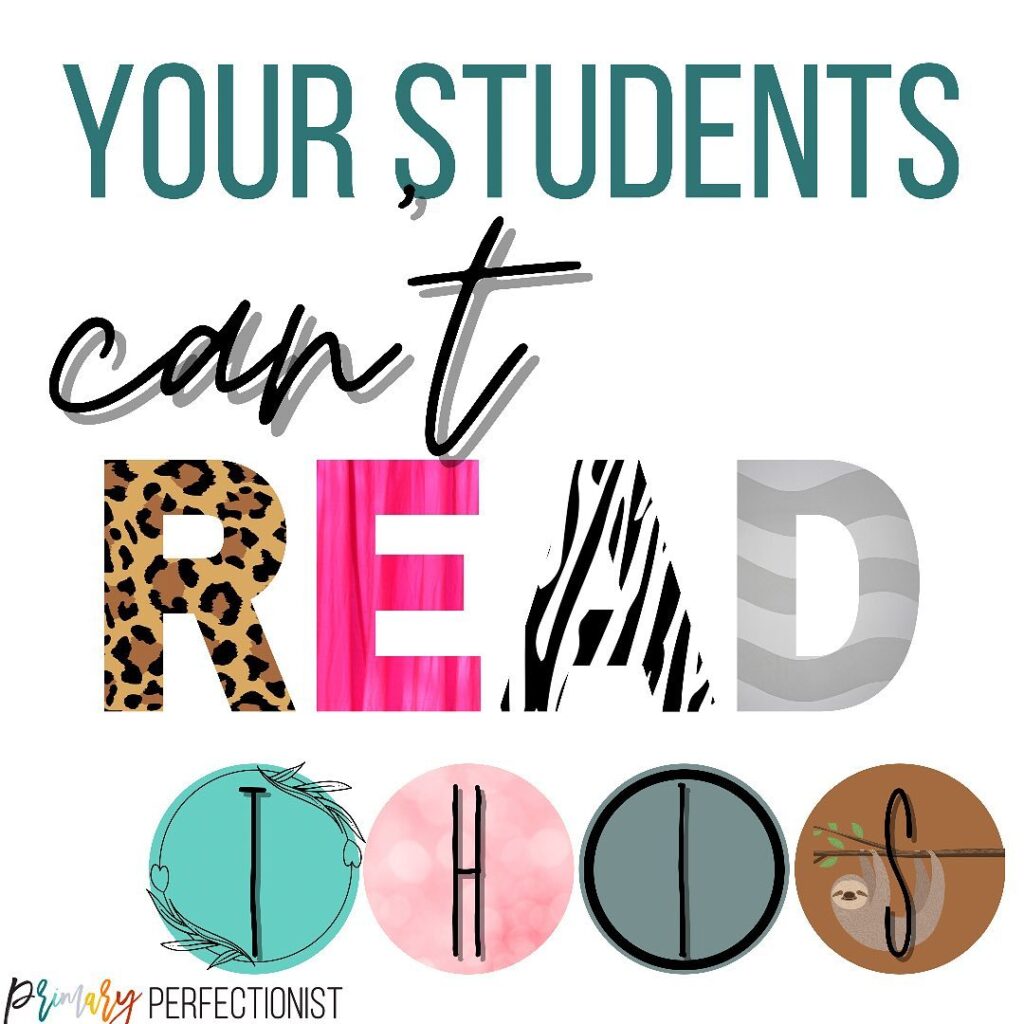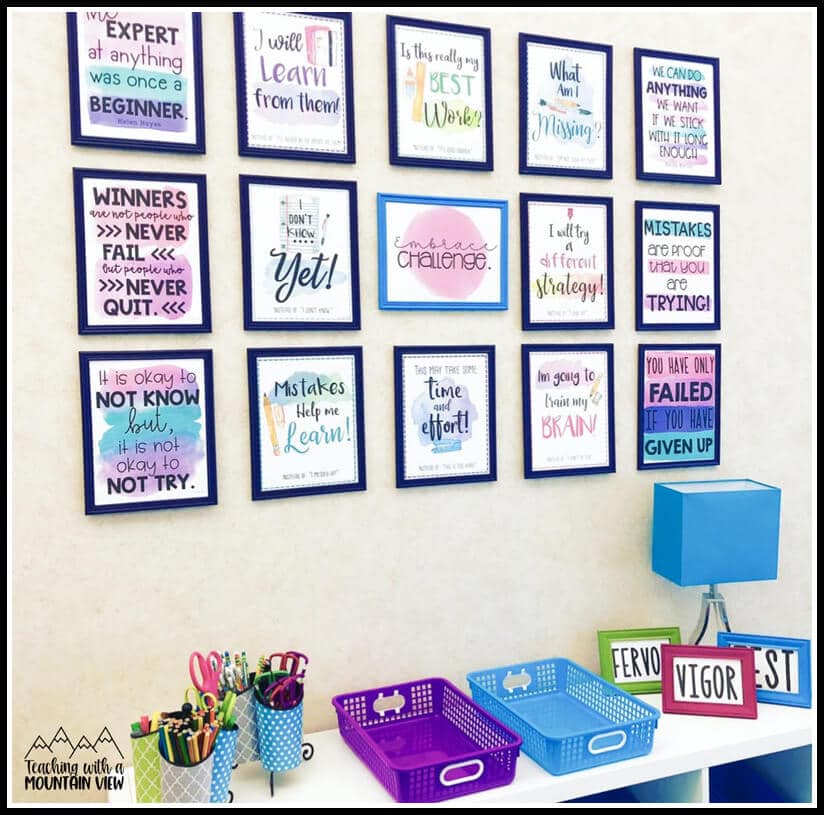Practical Classroom Decor Tips
By Mary Montero
Share This Post:
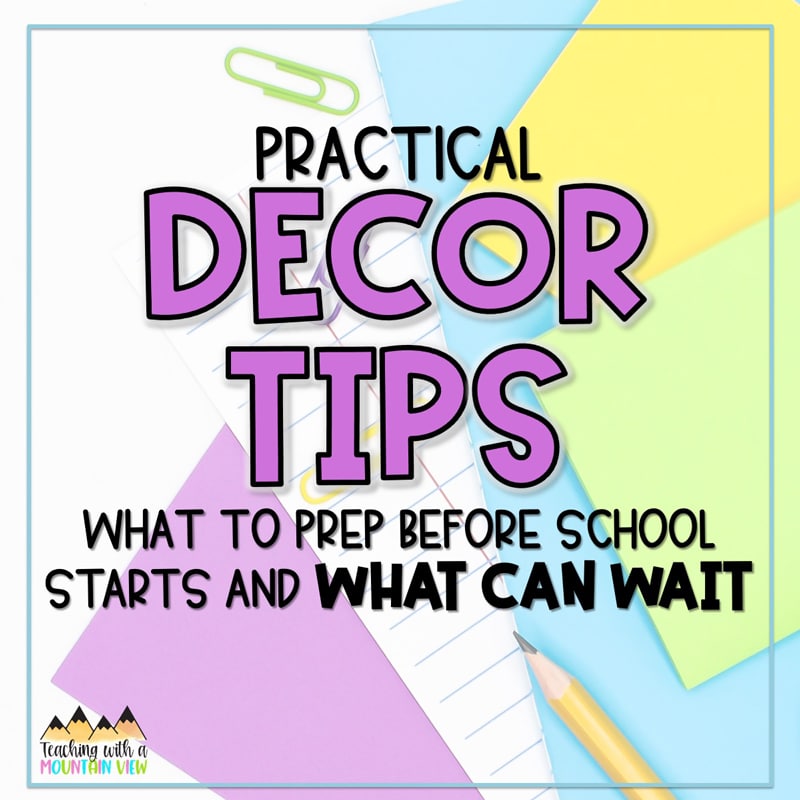
Mid-July is always that time of year when back to school thoughts start sneaking into my head pretty consistently. Maybe it’s all the school supplies in stores and the social media pictures of perfect classrooms that pop up this time of year. If you’re also starting to think about your classroom this fall, I wanted to share some practical classroom decor tips with you, and I’ll warn you… it’s probably not what you’re expecting. I always find it easier to spread out my “back to school” prep over a few weeks instead of trying to do it all right before students start. There are never enough paid prep hours in those first few teacher days, so this strategy makes it less stressful. HOWEVER, I want to be totally clear that it should never be expected that teachers are working in the summer!
As many of us go back into traditional classrooms after a year of digital or hybrid learning, it also seems like the perfect time to reevaluate what is (and isn’t!) working inside our classrooms. It just might be time to take something off your plate and these classroom decor tips can help.
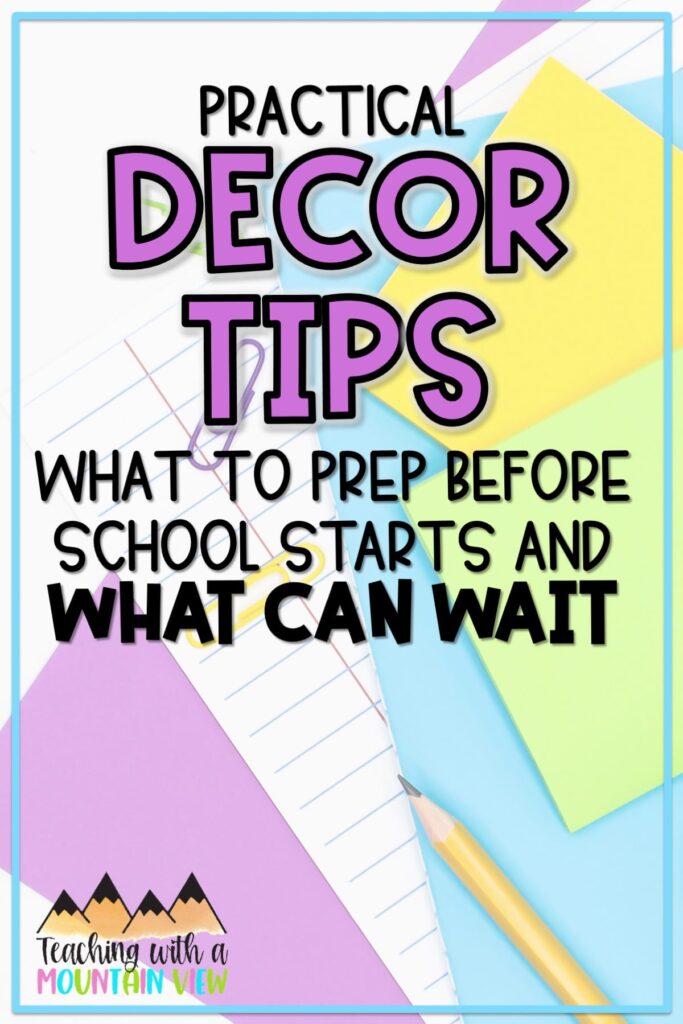
To Theme Or Not To Theme
Unless interior design and over-the-top decor brings you joy, this is one area where you can dial it waaaay back. I promise your students will not learn better just because their classroom looks like it came out of a magazine or is perfectly themed with succulents and flamingos (both things I do adore…). I think this is one area where social media has really put stress on teachers, but I personally love to use very minimal classroom decor.
Instead of doing an all-out theme, consider using a cohesive color scheme instead. This is also easier to update over the years as you get bored with the same look. Instead of sourcing an entirely new theme, you can update just a few colors. Opting to use black or white with pops of color is a smart way to do this! You could also choose to use a pattern in a few spaces– animal print, polka dots, stripes, etc. to help tie it all together.
Also, keep in mind the diverse populations you have in your class. While you might LOVE the look of a bright pink classroom, you very likely have students who wouldn’t feel the same way. I love bright colors, so I went with greens and blues.
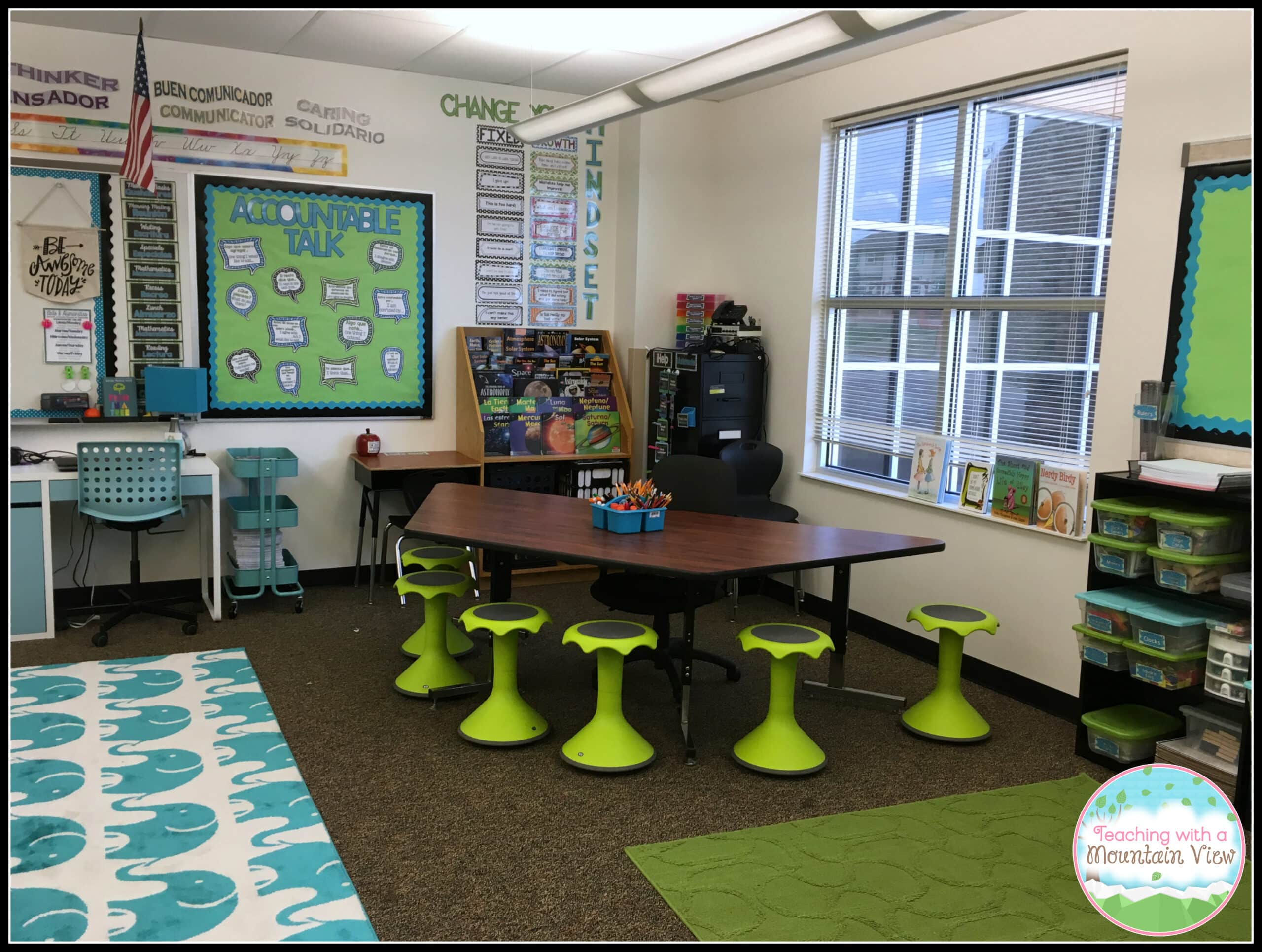
Going minimal with classroom decor also leaves room for plenty of mini room transformations throughout the year. For example, I love transforming our classroom into a bakery during our fractions unit or a construction site for perimeter and area. You can read more about using project-based learning like this here!
Keep it Age Appropriate
Don’t throw tomatoes, but this one is important and goes right along with selecting a theme. Please keep your decor age-appropriate. This means the writing on walls should be in a very kid-friendly, easy-to-read font that follows typical conventions (don’t mix upper and lowercase letters). I know we are all so tempted to buy beautiful decor sets with twirly fonts and trendy backgrounds, but this is not best practice for students, especially students still learning to read and write (which is truly MOST elementary-aged students). If you are hanging anything on your walls, it should have a clear, student-centered purpose (see the next section for more about that), and that means students need to be able to read it. I know it’s tempting. I do. But keep it simple and easy to read. Primary Perfectionist nailed it with this picture!
Wall Space
One of the most common questions that has come up in my Facebook group, Inspired in Upper Elementary, is about what to hang on the walls before school starts. Our classroom isn’t “Pinterest Perfect” ever, but especially not the first day of school. I like to start the year with very minimal classroom decor and mostly blank walls. The first principal I ever had preached “the beauty of bare walls,” and I could not agree more! This allows room for our classroom to come together with the students and give them some ownership of our space. They get to take part in watching our classroom come alive, and they are far more likely to reference materials that they had a hand in creating.
Having said that, I do like to plan out our spaces in advance. I make sure to leave space for:
Anchor Charts and Reference Materials: We create anchor charts together as a class, so I don’t have any hanging up before school starts, but I do like to create space for these important tools. I typically have one section for reading and writing anchor charts and one section for math anchor charts. I know a lot of people like to hang a curtain rod and keep them there all year, but I have found it’s easier to just invest in Post-It Note Anchor Chart Paper (Amazon affiliate link) and hang in layers of anchor charts throughout specific units. If your school uses accountable talk, Thinking Maps, or Depth and Complexity, these are all great additions as well.
Community / Life Skills: Some schools have school-wide themes that align with their mission statements or learning goals. If yours does too, this is one staple that you’ll want to plan wall space for and can probably prep in advance. Growth Mindset is a staple in our classroom, so it receives a permanent display on our walls. I have also spent a lot of time working in an International Baccalaureate school, so the IB attitudes and Learner Profile were also required to be on the walls.
Management / Schedules: Daily routines, special schedules, and group management all receive permanent wall space in our classroom too. These tools help student manage their own learning and are invaluable time-savers!
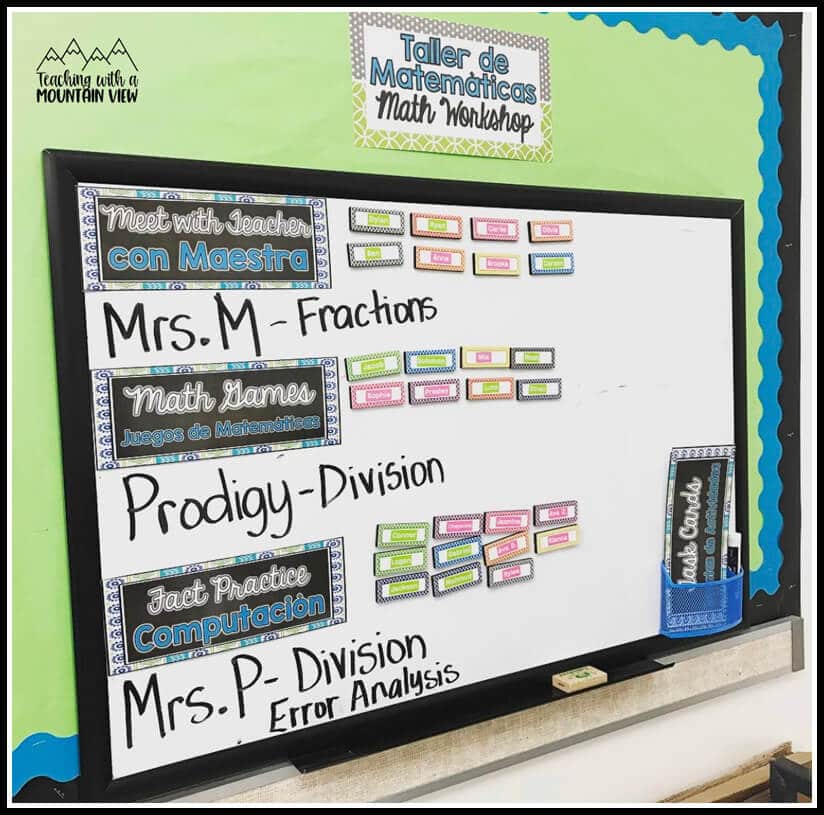
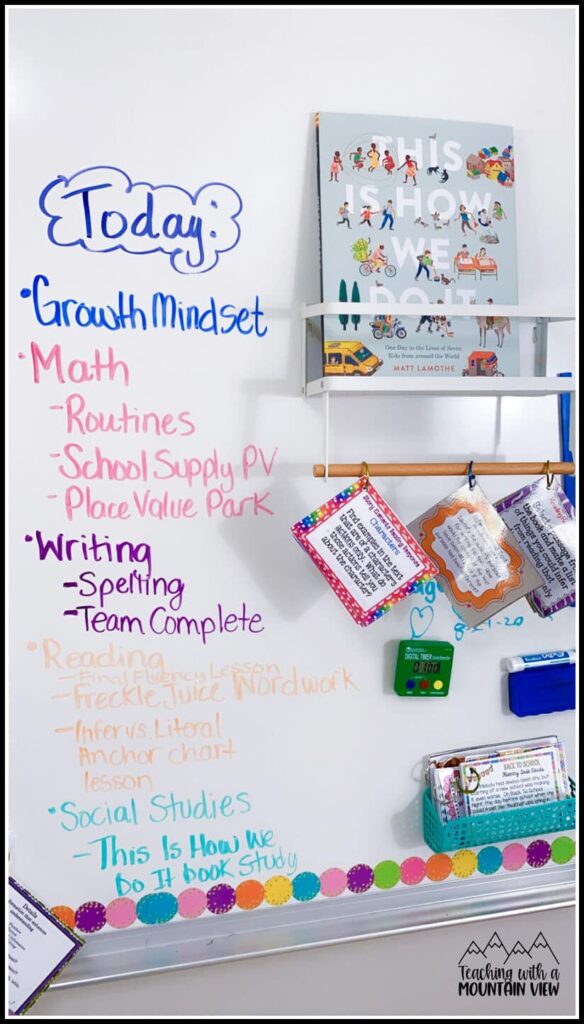
Student Work: Finally, I think it’s really important to create permanent displays for student work. Whether students self-select which pieces to include on a “brag board” or you update it with student projects throughout the year, make sure to leave space for this. Students take so much more pride in seeing their work on the walls. I also added an “Instagram” board years ago that was SUCH a huge hit. I always take pictures throughout the year anyway, and every month of two I would update our Instagram board by printing out pics and hanging them there. Students LOVED this. (For the beginning of the year, I have pictures of myself up for them to get to know me. I have students bring in a picture from summer and hang them after the first week of school.)
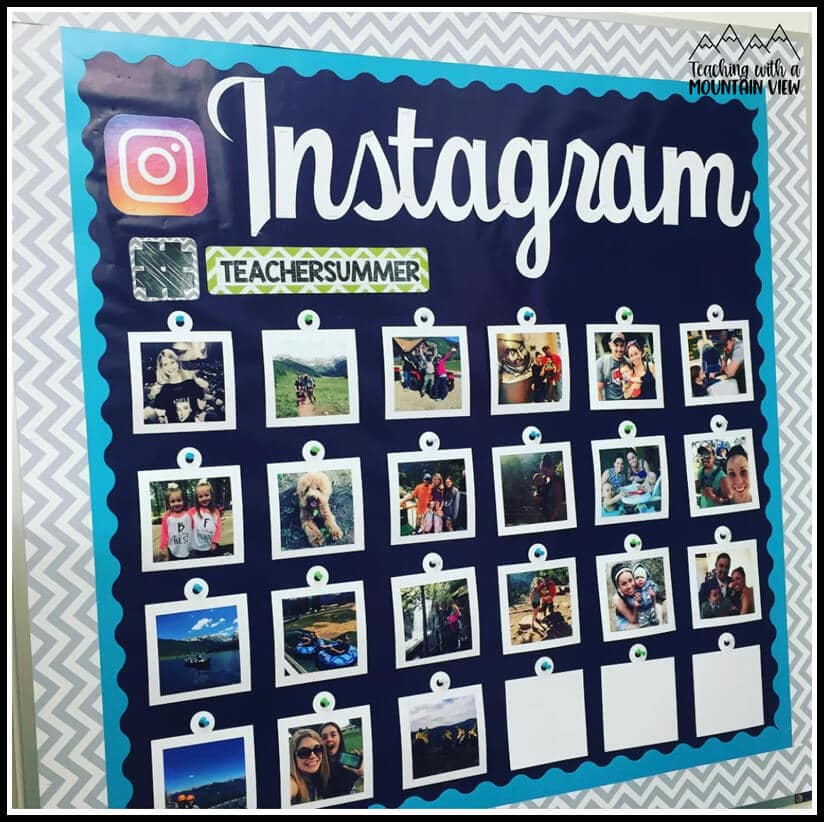
For easy reference, here is a full list of what I typically either hang up or find space for before the school year starts:
- Alphabet (cursive for grades 3+)
- Number Line (with Decimals for grades 4+)
- Multiple spaces for anchor charts (Writing, Reading, and Math)
- Schoolwide reference materials (accountable talk, depth and complexity, thinking maps, etc.)
- Growth Mindset Display
- Character Education Display
- Group Management (for math and literacy centers)
- Schedules and Routines
- Areas for Student Work
Flexible Seating
Do not stress about your seating arrangement before school starts! As you get to know your students and their needs, you’ll have a much better idea of where everyone needs to go. However, it is a great time to consider what types of seating you’ll use throughout the year. Many students are familiar with at least some form of flexible seating by the time they reach upper elementary. If you haven’t taken the leap yet yourself, I can’t encourage it enough! Starting with a few flexible seating options for small groups or learning centers is a great place to start.
You can read more about how to implement flexible seating on the first day of school here. I also shared a mid-year update and answered lots of flexible seating questions in this post.
More Classroom Decor Tips
I always love looking inside other teachers’ rooms for classroom decor inspiration. If you’re looking for new ideas to spruce up a corner of your classroom, you’re sure to find something you’ll love here.
Other Back To School Prep Tips
Mary Montero
I’m so glad you are here. I’m a current gifted and talented teacher in a small town in Colorado, and I’ve been in education since 2009. My passion (other than my family and cookies) is for making teachers’ lives easier and classrooms more engaging.







